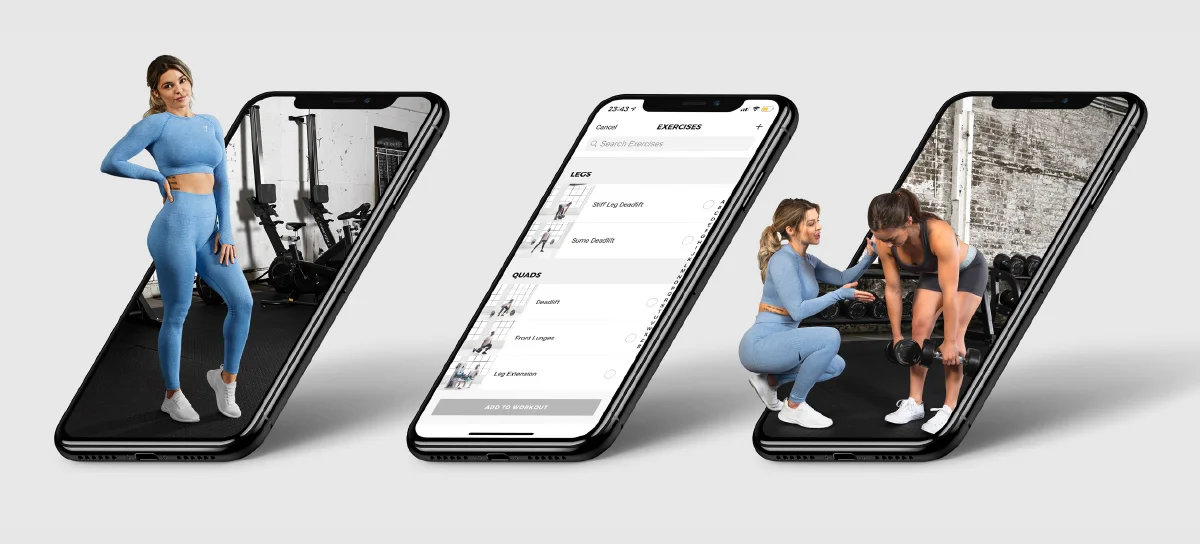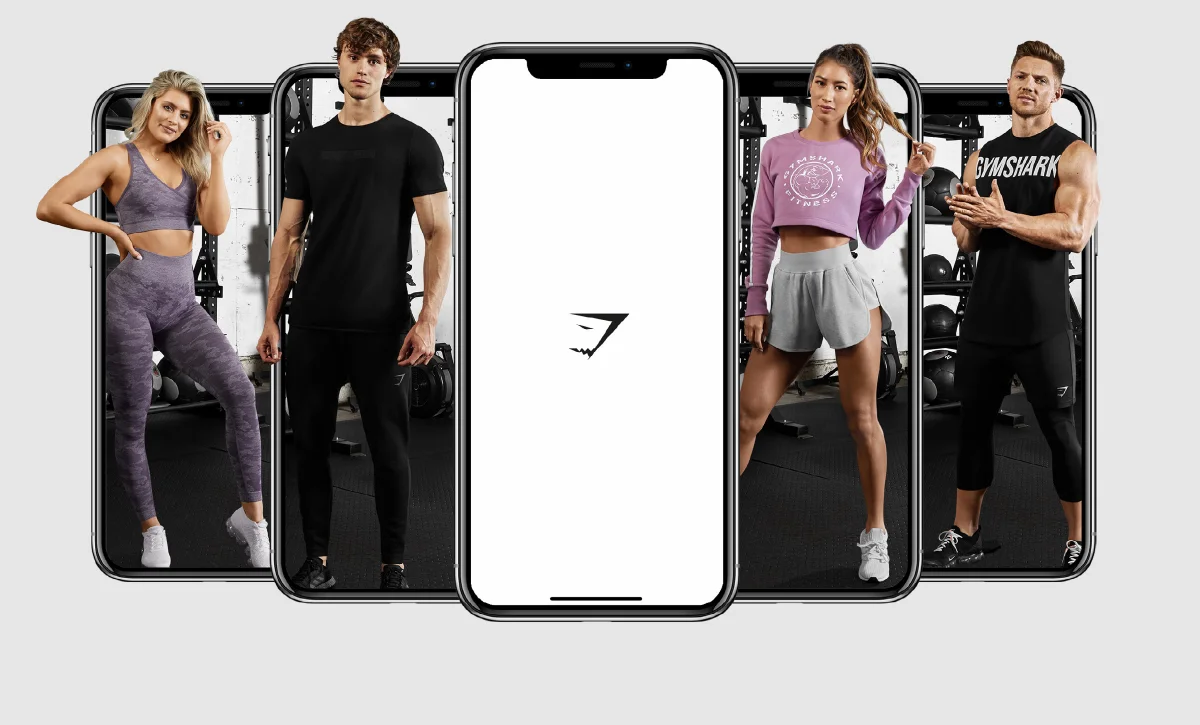Gymshark … forget digital and physical, hybrid or phygital … instead start with the customer, and how their experience can flow more positively, personally and profitably.
July 21, 2023

Gymshark, the activewear brand created by Ben Francis has grown rapidly over recent years, largely serving a young audience, selling online direct, powered by social influence.
It started out by drop shipping bodybuilding supplements online, before branching out into designing and producing its own line of activewear on a made-to-sell basis. By 2016, Gymshark was labelled the fastest growing company in the UK – and, in 2020 was named the UK’s fastest-growing fashion brand globally, boasting an average increase in international sales of 115.7% over the previous two years.
Today, Gymshark sells its fitness apparel direct-to-customer in almost 200 countries, and has translated its website into 13 languages to support its international growth. Though its initial birth and growth has been completed online, Gymshark opened its first ever physical store in October 2022 – almost a decade after the company was first founded. To highlight the success of the company, its flagship store is located on London’s prime shopping street – Regent Street.

This innovative flagship store is where Gymshark effortlessly incorporates its trusty digital technologies into a physical, in-person experience – its aim is to not only sell its clothing, but also allow the community to experience the essence of Gymshark. In addition to traditional clothing rails, the store boasts a fitness studio, or ‘The Sweat Room’, the fitness answer to Apple’s ‘Genius Bar’ called ‘The Pro Bench’, a Joe & The Juice concession, and a multipurpose area known as ‘The Hub’.
For some people, their Gymshark experience starts digitally – the latest video or recommendation on Instagram or TikTok, browsing the online store or app – for others it will start by walking into the store, exploring the Gymshark brand, and its related services. But these are not either/or, nor a linear flow. Brands like Gymshark have become immersive environments, fusing physical and digital as one, where the customer experience becomes a circular journey, where data enables great personalisation, where brands are no longer names of producers or products, but all about the customer and their community.
“Liquid CX” is all about thinking like a customer, enhancing their experience either through efficiency or added value, giving them more choice, serving them more personally, engaging them more deeply, in ways that drive relevant loyalty, and also finding new revenue streams.
Liquid CX is built on a board portfolios of physical and digital assets that can fuse together in a seamless and personal way for each customer. It goes more options for how people can interact with your brand and buy, how they want their products delivered, and what services they want to take advantage of in-store. This choice is what keeps customers loyal and allows them to choose the right journey that suits their needs in that moment.
For instance, with integrated stock management data, retailers can offer flexible fulfilment, giving customers the opportunity to click and collect, buy online pick-up in store, or buy in store deliver home – whichever methods work best for the products on sale and customer needs. This stock data also allows retailers to use stores as local hyper-fast delivery hubs and offer ‘endless aisle’ functionality, giving customers the opportunity to obtain any product they want, regardless of it being in stock in store.

In-person experiences can be elevated for customers with personalised discounts based on past or predicted purchases, and location-based push notifications. Cashier free shopping or mobile POS allow for frictionless checkout, whilst augmented reality (AR) overlays can help customers to source product information autonomously. With the right tools and data at their fingertips, store associates can deliver unforgettable in-store clienteling, giving customers instant information on products and availability without running to the stockroom, and offering advice on items that may be of interest, based on customers’ past purchases.
Liquid CX is most commonly found in fashion retail, but increasingly in food stores, music concerts, art galleries and sporting arenas too.
According to a recent McKinsey study, customers will expect hyper-personalised “liquid” experiences by 2025. Of course, with the help of data analysis and AI tools, retailers today can offer incredibly personalised experiences to their customers, both online and in-store. And the more digitalised the experiences, the more opportunities to capture and use customer data in useful ways
Some great personalisation activities are:
- Showing relevant product recommendations
- Tailored messages and targeted promotions
- Triggers based on customer behaviour
- Communicating timely at key touchpoints
- Curate content based on the customer’s specific interest
According to a 2022 IBM consumer study, 27% of all consumers say that “liquid” shopping is their primary buying method. In the case of Gen-Z, this number goes up to 36%. Knowing that Gen-Z consumers are born from 1997 onward, they hold plenty of purchasing power and will continue to do so even more.
Retail stores have yet to understand and experience all the benefits of “liquid” shopping. There are so many benefits and reasons for physical-centred stores to have an online presence (and equally digital-centred stores to be more physical):
- A more personalised shopping experience
- Better customer satisfaction and loyalty
- Greater customer reach through multiple online and offline channels
- Increased engagement and multiple touchpoints for customers to interact with your brand
- Increased foot traffic thanks to in-store pickup or returns for online purchases
- A competitive advantage among other retailers
- Better operational efficiency, reduced waste, and reduced costs
And, of course, perhaps the biggest benefit of providing “liquid” experiences as a retailer is the possibility to analyze consumer behaviour with unique sales data. Leveraging these insights you canand optimize every aspect of your store, especially things like inventory management, marketing, or customer service.
Perhaps the best example of a successful personalizsd shopping experience is the retail giant Sephora.
In March 2020 when the pandemic hit, Sephora closed its physical stores. But, instead of seeing it as a setback, they embraced the situation and pivoted to appointment-based personal shopping and VR demos and tutorials.
As they saw their efforts paid off, they introduced their AR fitting room and Color IQ technology that scans a customer’s skin to recommend matching foundations.
As the cherry on top, they provided free shipping, same-day delivery, and flexible in-store or curbside pickup options.
Sephora’s successful implementation of these personalized shopping experiences led to increased market share even after the pandemic’s impact diminished.
https://www.youtube.com/watch?v=RgNuwb9lpeg
More from the blog